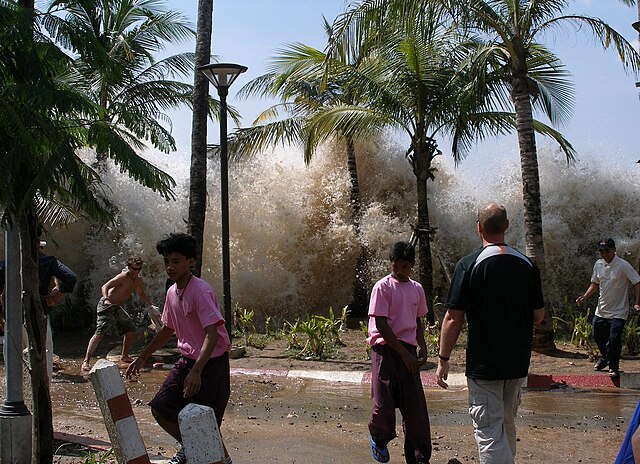A tsunami warning system (TWS) is used to detect tsunamis in advance and issue the warnings to prevent loss of life and damage to property. It is made up of two equally important components: a network of sensors to detect tsunamis and a communications infrastructure to issue timely alarms to permit evacuation of the coastal areas. There are two distinct types of tsunami warning systems: international and regional. When operating, seismic alerts are used to instigate the watches and warnings; then, data from observed sea level height are used to verify the existence of a tsunami. Other systems have been proposed to augment the warning procedures; for example, it has been suggested that the duration and frequency content of t-wave energy is indicative of an earthquake's tsunami potential.
Evacuation route sign in a low-lying coastal area on the West Coast of the United States
Tsunami Early Warning Tower board in Hikkaduwa, Sri Lanka
Tsunami warning system in East Timor
Evacuation route sign on the pavement in Kamakura, Japan
A tsunami is a series of waves in a water body caused by the displacement of a large volume of water, generally in an ocean or a large lake. Earthquakes, volcanic eruptions and other underwater explosions above or below water all have the potential to generate a tsunami. Unlike normal ocean waves, which are generated by wind, or tides, which are in turn generated by the gravitational pull of the Moon and the Sun, a tsunami is generated by the displacement of water from a large event.
The 2004 Indian Ocean tsunami at Ao Nang, Krabi Province, Thailand
Tsunami aftermath in Aceh, Indonesia, December 2004
Lisbon earthquake and tsunami in November 1755
The wave further slows and amplifies as it hits land. Only the largest waves crest.








